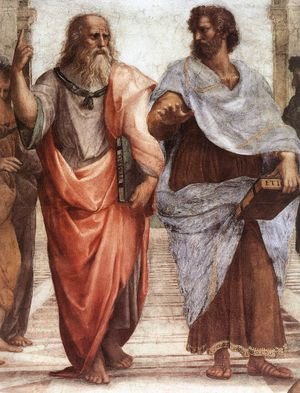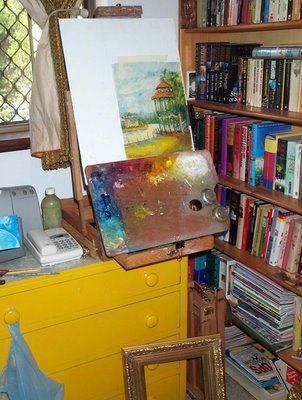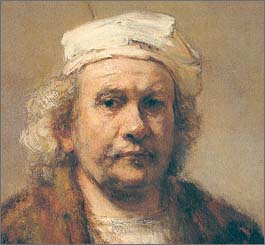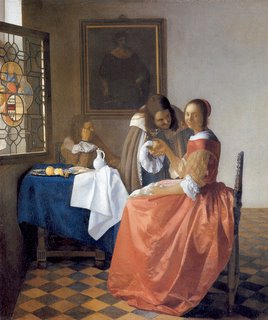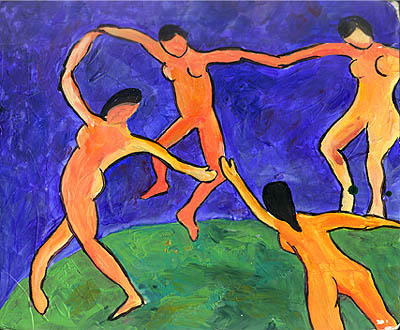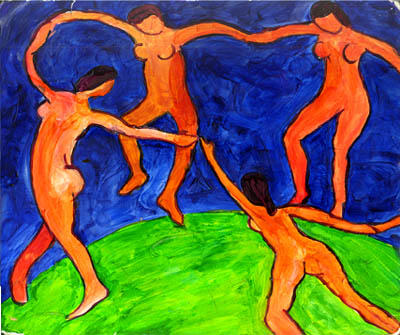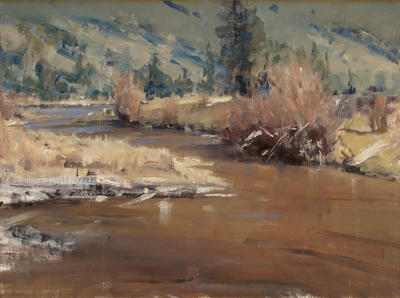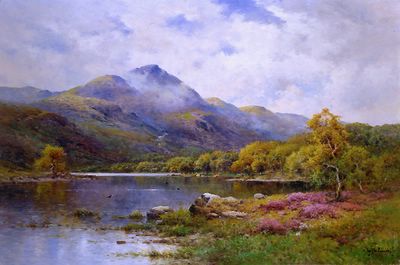COMPOSING A Painting
Adapted from an article by Dianne Johnson.
www.1dianejhonson.com/critiqueshop/self_list.html
Here are just a few things to keep in mind and check while composing:
· balance of elements
· balance colour
· light using value and hue
· centre of interest
· perspective geometric
· perspective atmospheric
· perspective relative size and superimposition
· space shape division
· positive/negative shapes
· harmony colour
· movement
· rhythm
· texture
· direction of line(s)
· edges
· balance of patterns
· contrast
· creativity
· overall design quality
· Visual strength
How to Evaluate Your Painting or Drawing
First impressions are important. When approaching any art work how do you respond to it at first sight? How do you respond emotionally...if you do at all? In the case of your own work, this is harder to do, as you have been labouring over it for some time. Therefore, it is a good idea to put your painting/drawing aside for a few days so you can view it with a "fresh eye."
Next, take some time to observe the art. Don't make any judgments yet, just LOOK. Physically stand back, take your time, and just view the shapes, sizes, colours, patterns, texture, subject; becoming familiar with the image before you.
Using the Critique Checklist (which is a basic listing of what to look for while evaluating) one-by-one, carefully examine how the painting/drawing is constructed, the technique and creativity, and the "message" it is conveying. (It may be helpful to put your findings and thoughts in writing as you go along.)
· Look for the strongest areas, the weakest areas, and note any unique or special qualities of the piece. As you use the checklist ask yourself these questions:
· Where are the strongest passages...what did I do well that can be repeated in my next painting/drawing?
· Are areas overworked or under worked?
· Is there a spot where I tried to "cover" an error, weakness or inability to solve a visual problem? (Expose this, and work to master the skill so you don't repeat the error.)
· What do I need to do to make corrections improvements?...Take a class, read a book on the subject, obtain a video?
· Is the painting/drawing finished? Determine whether you can make corrections to weak areas you discovered, or stop, and improve with your next creation.
· Lastly, to catch any lingering problems use the following
Take Another Look
Another way to check your drawing/painting is to view it from a different vantage point then re-evaluate. The following two methods are used to clarify compensate and correct for our natural tendency to favour our left or right eye thereby causing distortion in our artwork:
1. Stand with your back to the work and view through a mirror (as you would when checking the back of your hair in a bathroom mirror.)
2. Physically turn the picture upside down. If you are working from a photo, turn it upside down as well, then switch your eyes back and forth between your work and the photo to immediately spot errors to correct.
Both of these methods will enable you view everything as shapes and forms rather than your familiar subject. You can readily identify things that are out of alignment, colour problems, etc
CRITIQUE CHECKLIST
GENERAL OBSERVATIONS
· Is the painting/drawing a landscape, figurative, portrait or still-life? (or other?)
· What is the style, ie Photo-realist, realistic, impressionistic, etc.?
· What is the subject?
· Is the image oriented appropriately, ie. if the subject is wide is the art surface horizontal; if the subject is tall is the surface vertical?
· What medium(s) was used to create the drawing or painting? Pencil, charcoal, pen & ink, marker, coloured pencil, pastel, acrylic, oil watercolour, gouache, etc.
· What surface material was used? Paper, toned paper, museum board, canvas board, canvas, Masonite, etc.
· How does the surface impact the resulting artwork? Did it become a part of the picture through texture or colour?
COMPOSITION
· What is the composition?
· Do the elements lead you into or out of the picture?
· Do they create a circular flow into the centre, do they form a triangle or other shape, ie., what is the pattern of movement in and through the picture?
· Is the composition in "formal" or "informal" balance?
· What is the "focal point"? Is there more than one focal point?
· Is there a visible foreground, middle ground and background?
· Is the perspective correct throughout the composition?
· (Accurate perspective is critical and foundational to a painting/drawing's underlying structure -- particularly realistic images. And if an abstract image, skill in perspective is essential to successfully deviating from reality.)
· Does the design of the composition give a sense of visual tension, restfulness, energy, etc.? Can you discern why?
DRAWING
Critique of a drawing:
· Describe what style of drawing this is: vignette, full drawing; very detailed, little detail, loose and sketchy, etc.
· What is the overall visual texture and what kind of lines make up the drawing, i.e. soft, rough, smooth, energetic, subtle, bold, etc.
· Does it appear to be cleanly done, ie. free from smudges and smearing.
· Is the modelling of the shapes done correctly and are all elements of 3d forms rendered correctly, ie. highlight, middle tones, reflected light, etc.? (also see LIGHT)
· If using charcoal, pencil and the like, is there a good range of values? That is, are the whitest whites and the darkest darks present along with the range of grays in between? If the drawing is a "high-key", is there a good range of medium gray to white? If the drawing is a "low-key", is there a good range of medium gray through black present?
· Vignette, full drawing; very detailed, little detail, etc.
Critique of a drawing or a painting:
· Are the shapes and forms correctly depicted?
· Are all objects rendered solidly so they do not appear to float in the air. That is, Is everything in the picture firmly in place visually?
· Are the proportions and measurements between objects correct?
· Are there any ambiguities...ie. does everything make sense with nothing questionable as to it's position, what the objects are, etc.?
· Are symmetrical objects truly symmetrical, ie. are they the same on both sides or do they need adjusting?
· If the drawing is a realistic one, are do all forms appear to be 3D and convincing or are they flat and why? If the drawing is not realistic, are the 2D forms shaped correctly?
· Overall, is the structure of the drawing well done or is it weak in areas? What recommendations can you make for improvement?
LIGHT
· Where is the source of light coming from, ie. sun, artificial light, etc.?
· What direction is the light: from above, below, left, right, etc.?
· How strong is the light: is it soft and subtle, bold and dramatic, etc.?
· How does it affect the subject and mood of the painting?
· What colour does the light appear to be and how does this affect the colour of the subject and surroundings?
· Did the artist correctly render the light in all areas of the work, ie. direction, how it touches or moves around objects, etc.? Are there ambiguities and how might these be clarified?
· Are there hard as well as soft edges to define objects? Are lost edges present which contribute to a sense of depth and space in the picture?
COLOUR (Applies to a painting or coloured drawing)
· What is the general value of the picture, ie. high-key, low-key, etc.?
· What is the "temperature", ie. cool, warm, neutral, etc.?
· Does the overall value and temperature seems appropriate for the subject?
· Are the colours "muddy" or clear?
· How does the light affect the colours?
· Are the colours bright or dull?
· Were colours mixed directly on the surface or first mixed on a palette then applied?
· Was colour or line used to define edges around objects.
· Are the forms rendered correctly, ie. is the structure of the 3d forms, ie. highlights, local colour, reflected light, etc., present and in their proper position?
· Check to see that any reflected lights are not lighter than they should be.
· If there are any reflections and shadows on water or glass are these rendered correctly?
CREATIVITY
· Compare the treatment of this subject to similar subjects in other artist's work. Does it capture the subject in a creative, new, or unique way, or does it lack life, energy or seem "flat"?
· While you were working did it seem laboured or did it come easy for you?
· Did you have to concentrate hard while working on some things but with ease on others? Identify examples of each.
· When you planned and executed your painting/drawing did you copy from something you saw, treat something you saw in a new way, or work totally "from your head." (Note: There is no greater virtue to doing working from your imagination than from something that exists. What matters is what you do with the subject...did you give it an new twist, or experiment in some way, etc.?)
· Did you find yourself experimenting at all -- if yes, what did you discover? What were some of the successes, what were the less successful?
· Did you think about what you'd treat differently next time?
CONCLUSION
· How did you respond when you first saw this painting/drawing?
· How do you respond to it after having gone through this checklist?...Do you have a better appreciation for the piece -- see it as stronger, weaker, etc. than at first?
· Overall, is the technique, colours used, and treatment appropriate and effective for the subject painted?
· Are there areas of the picture that seemed to come easy to you and other areas very difficult? Identify these.
· If the art is your own work, has this picture improved since your last attempt?
· What specific things will you do to correct problems?
· What specific things were done well and are worth repeating in future work?
· What specific things have you learned through critiquing this art work, whether it is yours or someone else's?
a FEW TIPS
· Practice all you have learned on this site by spreading out several of pieces of artwork, then use your checklist to conduct a self-critique.
· Do this often, and it will pay great dividends in your work. And don't forget to have others give their opinion as well...you'll be surprised how observant those with no art training can be. And as often as necessary, ask a professional or to give you an unbiased evaluation to further your growth as an artist.
· At the first sign of difficulty while you're creating a painting or drawing, STOP... and go through your critique checklist -- you'll catch problems before they get too severe.
· Evaluating as you are working will minimise reworking, and build your confidence. When conducting a critique, view the art in the light you created it in as well as the light where it will eventually be displayed. For example, if the art will be placed in a living room with incandescent light, view it in that light; if in an office under florescent light, evaluate it there, etc.
· If you are copying other's work or photos to practice making things look accurate -- this is fine while you are learning. Even so, strive to work your own way into the subject. As you master each basic skill you can add creativity by changing colours, moving objects, etc. Strive to learn skills then apply them in your on special way -- that's what creativity is!
· As much as possible, work from REAL LIFE rather than photos. We will be featuring an article on this subject soon.























